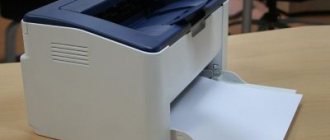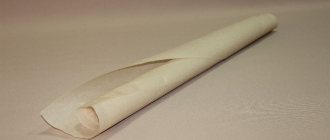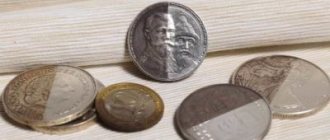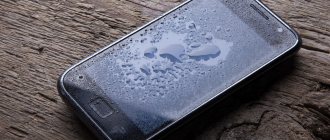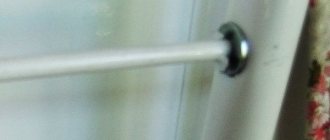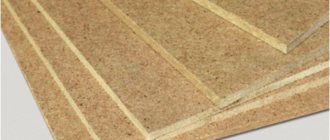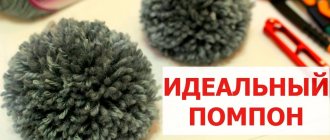How to align passport pages?
To properly dry your passport
After washing, you need to put it on the table, for example, so that it dries naturally at room temperature.
Every half hour the paper between the pages of the passport
must be changed. This will absorb moisture from the pages of the document faster, and it will dry evenly.
Interesting materials:
What is needed to obtain a certificate of marital status? What is needed to obtain a certificate of change of surname? What is needed to obtain a certificate of family composition? What is needed to obtain a certificate from a narcologist and psychiatrist? What is needed to obtain a certificate from a narcologist? What is needed to obtain a certificate of residence? What do you need to get a certificate for the swimming pool? What do you need to become a lawyer? What is needed to obtain refugee status in Germany? What is needed to obtain the status of a large family?
LiveInternetLiveInternet
When this procedure does not help, proceed as follows. Two sheets of thick white paper are moistened on one side with a swab moistened with water, and excess water is removed with dry cotton wool. With the non-wetted sides, this paper is applied to the deformed sheet of the book and two more sheets of the same, but not wet paper are added to this “sandwich” on each side, after which they are ironed with a hot iron until the paper is completely dry. In this case, you should be careful: overdried book sheets often become fragile.
If you need to work with sheets of coated paper, you should remember that it can delaminate due to heat, so straightening the deformed sheets of such books should only be done under a press, after moistening them over steam, making sure that drops of water do not fall on the surface of the paper.
Before pressing the block, one sheet of clean thick paper should be placed on both sides of the sheet to be straightened. Mold may subsequently appear on books that are wet and then dried , so you need to watch them for a while.
If you notice mold on a book, you don’t need to shake it off and wipe it with a rag, this won’t help. Hydrogen peroxide is used to remove mold. Place a sheet of clean paper between the page being cleaned and the next one, gently moisten the stain, remove excess peroxide from the stain with blotting paper and leave to dry. If necessary, wetting the stain with hydrogen peroxide is repeated, after which the stain usually disappears and the original color of the paper is restored.
Also, mold on books is removed using formaldehyde diluted with water (an aqueous solution of formaldehyde). A cotton or gauze swab is moistened with formaldehyde and squeezed tightly, then carefully remove the mold; However, mold should not be rubbed or smeared on a sheet of paper! The treatment is repeated again with a second similar swab. To prevent mold from affecting all your books, you need to remove them from the shelf from time to time and air them in the truest sense of the word.
Alas, a book damaged by water will never be as good as new. It will remain somewhat deformed and stained, and the binding of the book will be swollen. But if everything turned out the way it did, you can always console yourself with the thought that you acted quickly and competently in such an extreme situation.
Did you know
What is not recommended to do when using a microwave oven?
USEFUL TIPS FOR WASHING MACHINE OWNERS
How to quickly straighten paper
To quickly straighten a crumpled sheet, roll the document on the edge of the table. This method will eliminate strong and major creases. Try making a photocopy of a document on a large copier, which will press the paper hard. A home appliance may not be able to handle this task, and the copy will end up with wrinkled lines and streaks.
Another original method is to run the sheet through the printer without printing on it. The device will eliminate light creases. However, this method is only applicable if the paper format is suitable for the printer. To straighten wrinkled paper, do not use a straightening iron, curling iron or hair dryer! Otherwise, you will irreversibly damage the document or notebook.
If the paper is very wrinkled, you can smooth it out using a press and an iron. Thus, you will smooth out any document, sheet, notepad and notebook, banknote and even wrapping paper. In addition, such methods are also suitable for smoothing files. Let's find out how to do this.
Leveling under pressure
The simplest method is to use a press. It consists in the fact that the paper straightens naturally under weight. You can use thick books or any other weighty objects that are suitable in size as a press.
You need to do the following:
- Moisten the crumpled paper sheet with water. It is best to use distilled one, which does not contain any substances that could negatively affect the quality of the paper. To evenly irrigate the leaf with water, use a convenient sprayer. It should be kept approximately 30-40 centimeters away from the paper.
- Alternatively, wet a soft terry towel with water, wring it thoroughly and straighten it, and then place it on top of the paper.
- Regardless of which soaking method was chosen, you must act extremely carefully so that the paint or ink on the paper sheet does not dissolve.
- Now the wetted sheet must be smoothed with your hands and placed between felt scraps, fabric or paper napkins or other materials that can absorb moisture.
- After this, you need to place a heavy press on top of the paper sheet. The minimum holding time is twelve hours. During this entire period, you need to check the condition of the paper. As moisture increases, it is necessary to change the absorbent material. It will take two to four days for the crumpled paper sheet to dry completely, depending on the degree of moisture.
See also
Instructions on how to repair a leather jacket with your own hands
Drying tinted paper.
After we have toned the paper in any way, for example like this
Paper with text, tinted.
A way to age paper
, it needs to be brought to mind, dried.
It doesn't seem complicated, but it might be useful to someone.
So, first we need space, newspapers or corrugated cardboard from boxes, clean. Newspapers and cardboard are useful things in this matter, and the more of them in the house, lying in a neat pile, the better.
(Wet paper looks brighter in color; when it dries it will be a more subdued color.)
We spread newspapers or cardboard in 1-2 layers, this way the water from the tinted paper will be absorbed faster and the process will go faster. Newspapers and cardboard are very convenient things in this matter, and work better than fabric, oddly enough.
The newspapers or cardboard are laid out and we begin to carefully remove sheets of paper from the tray one paper at a time, we do this slowly, trying not to damage the soaked paper, which easily tears due to moisture. If the sheet is torn, do not rush to throw it away, dry it, it may be useful later, you can use it to make a tag, bookmark, cover element, etc.
Try to lay out the sheets on the newspaper not overlapping, but at a short distance from each other; in this arrangement, the sheets will not stick to each other, and they will be easy to turn over while drying.
All or part of the sheets are laid out, you need to wait until they become damp evenly over the entire surface of the sheet, then they can be turned over to the reverse side. The more often you turn and rearrange the sheets, the faster they will dry.
It is worth collecting sheets from a newspaper when they are not completely dry, but there is a little moisture left, just a little.
We collect them in piles, so we find a place to lay out the next sheets on newspapers. And the finished sheets folded in stacks are smoothed naturally. It is worth noting that the stack must be stirred frequently, the sheets must be shifted one on top of another, divided into piles, turned over, in this way they will be smoothed out and will dry completely faster. Laying out and drying will take several hours, so you need to be patient!
But then you will have paper with a beautiful color and all the sheets will have their own design.
I hope I wrote it for good reason and it will be useful to someone!!
That seems to be all. It’s not difficult at all! In conclusion, I want to say - I wash my hands before every contact with paper so that there are no stains.
And every batch of paper,. Even when I paint with familiar dyes, I always check whether it can be written on with different pens and pencils.
And now that's it!! Good luck !!
How to iron paper
Take a towel or thick cloth and a spray bottle with distilled water. Do not use tap water as it contains certain minerals that will make the sheets hard and brittle.
First you need to lay out the paper on the ironing board and straighten it with your hands. Cover the document with a towel or thick layer of cloth. Set the iron to the lowest temperature so as not to overdry the items and make the canvas brittle or yellowed.
Then you need to carefully smooth the crumpled paper with an iron through a towel or cloth. After a minute, check the result. If the sheet is not leveled, slightly increase the heat of the iron.
If the sheet gets too hot, moisten the back of the document with water from a spray bottle. Then the product must be gently ironed again. Repeat the procedure until you achieve the desired result.
Canvases after watercolors, after chalk and inks that are not resistant to moisture should not be wetted with water! Increase the heating temperature of the iron gradually and start with the lowest one. Otherwise, when the printed text is processed at a hot temperature, the latter will begin to melt. As a result, it will stick to the towel or fabric through which the document is ironed.
Do not use too much water when spraying, otherwise the text or design will float. Do not iron your passport or other document without a towel or cloth. Without this, the sheets will turn yellow and will not smooth out. It also increases the risk of ignition and fire.
When to contact specialists
In case of wet or crumpled paper documents that are of particular value or importance, it is recommended to use the services of specialists - restorers or archivists.
The use of professional equipment allows you to restore:
- old documents with a fragile texture;
- paper sheets with watercolor paints;
- any paper products for which home smoothing methods are not effective.
How can you handle a book?
- Maintain hygiene when reading a book Reading while eating is harmful. ...
- Don't break books Softcover books allow you to take them with you in a small handbag and won't take up much space in your backpack. ...
- Store books in a dry place...
- Transport your books in a separate bag...
- Repair your books
8 Jan
2015 Interesting materials:
Why doesn't the peach seedling grow? Why don't apple trees grow on the site? Why shouldn't you collect bouquets of primroses? Why doesn't the vacuum cleaner pull? Why doesn't the Decembrist flower bloom? Why doesn't the Christmas star bloom? Why doesn't cauliflower bloom? Why doesn't jasmine bloom? Why don't young violets bloom? Why can't I play the video?
How to save a wet book: instructions from librarians
© Collage Chips Journal
Restoring the original appearance
Has it ever happened in your life that a book slipped out of your hands and fell straight into a puddle? Or into a filled bath? Or did you just accidentally spill a glass of water and the book became an absorbent? Or are you soaked to the skin in the rain?
Librarians at Syracuse University in America clearly had to save books from floods and other troubles more than once. We have collected their recommendations for you.
Paper napkins
So, the first thing you need to do is stock up on plenty of paper napkins (paper kitchen towels will do). It is with their help that you need to do the initial processing of the book and squeeze out excess moisture. Place a few napkins under the book and a few on the front cover and press down gently with your hand.
Patience and accuracy
At the second stage, you need to be patient and line every ten to fifteen pages of the book with paper napkins.
Important: the book cannot be opened more than 90 degrees - that is, you must constantly hold it with one hand (or you will need to come up with some kind of special supporting structure, otherwise there is a risk that the book will fall apart).
How to dry paper in the oven?
Putting down the paper
on a baking sheet, sprinkle it with a little coffee from our prepared mug.
Dark coffee splashes create additional uneven shades on the paper. Next, place the paper
in a preheated
oven
to dry. The paper dries for 1-2 minutes, during which time the next sheet is soaked in the tray with tea.
Interesting materials:
Why do ingrown pubic hairs appear? Why do ingrown hairs appear on legs? Why do ingrown hairs appear after depilation? Why do ingrown hairs appear after sugaring? Why do yellow spots appear on wallpaper? Why do yellow sweat stains appear? Why does it show that it is not registered on the network? Why is there redness on the face? Why does the coating come off the nail? Why is a contrast shower useful?
